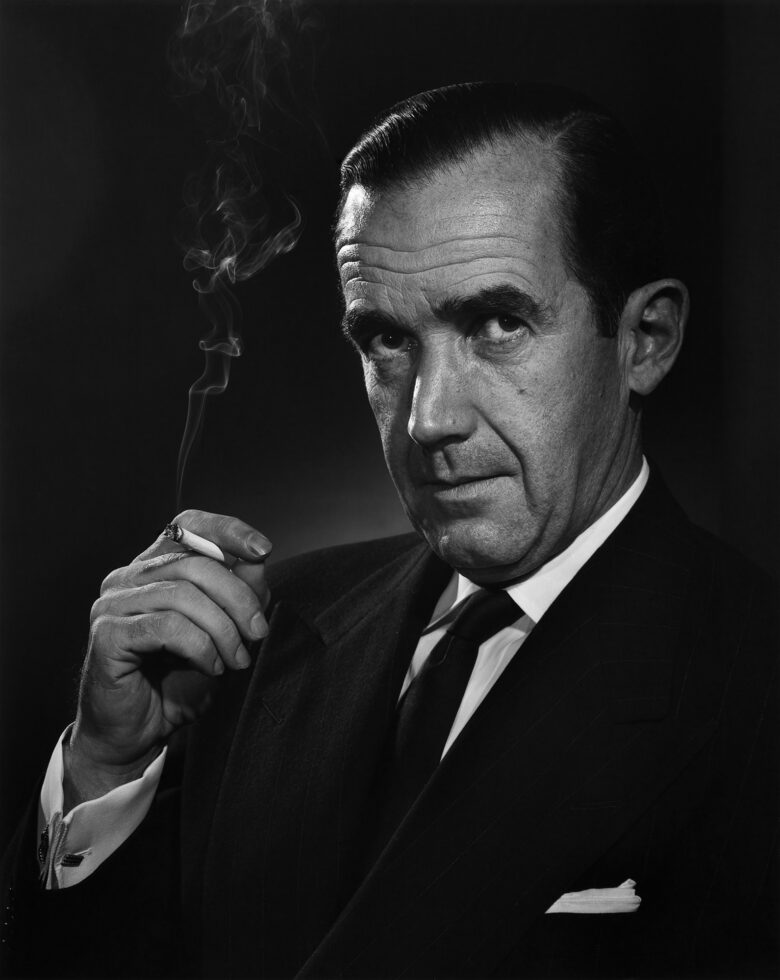The Life and Legacy of Edward R. Murrow

Edward R. Murrow is an iconic figure in the history of journalism, renowned for his integrity, courage, and exceptional storytelling abilities. His contributions to radio and television journalism during pivotal moments in the 20th century have left an indelible mark on the industry. This article delves into the comprehensive details of Murrow's life, career, and lasting impact.
Quick Facts About Edward R. Murrow
| Full Name | Edward Roscoe Murrow |
|---|---|
| Date of Birth | April 25, 1908 |
| Age at Death | 57 years (died April 27, 1965) |
| Occupation(s) | Radio and Television Journalist |
| Nationality | American |
| Height | Not Available |
| Net Worth (2024) | Not Available |
| Source of Wealth | Journalism, Broadcasting |
| Parents | Roscoe Conklin Murrow, Ethel F. Murrow |
| Marital Status | Married |
| Spouse | Janet Huntington Brewster (m. 1935) |
| Children | Charles Casey Murrow |
| Education | Washington State University |
| Known For | WWII Reporting, McCarthy Hearings |
| Major Awards | Peabody Awards, Presidential Medal of Freedom |
Early Life and Education
Edward Roscoe Murrow was born on April 25, 1908, in North Carolina to Roscoe Conklin Murrow and Ethel F. Murrow. He was raised in a modest family, which instilled in him the values of hard work and integrity from a young age. During his high school years, Murrow was actively involved in both the debate and basketball teams, showcasing his early talent for communication and teamwork.
Murrow attended Washington State University, where he further honed his skills in public speaking and journalism. His academic journey laid the foundation for a career that would revolutionize the field of broadcast journalism.
The Genesis of a Pioneering Career
Early Days in Broadcasting
Murrow's career in journalism began in the 1930s when he joined the Columbia Broadcasting System (CBS). His first major assignment was to cover the rise of Nazi Germany, a task that he executed with remarkable precision and depth. Murrow's firsthand accounts from Europe provided American listeners with a vivid picture of the unfolding global crisis.
Defining Moments: World War II
Murrow's reporting during World War II is perhaps his most celebrated work. Broadcasting live from London during the Blitz, his vivid and emotive descriptions of the bombings brought the war into the living rooms of Americans. His signature opening line, "This... is London," became synonymous with trustworthy and courageous journalism.
The McCarthy Era
In the 1950s, Murrow turned his attention to domestic issues, particularly the Red Scare and Senator Joseph McCarthy's anti-communist crusade. His program "See It Now" aired a critical exposé of McCarthy, which played a significant role in the senator's eventual censure. This fearless act cemented Murrow's reputation as a champion of truth and integrity.
Financial Footprint
While exact figures regarding Murrow's net worth are not available, his primary source of income was his work in journalism and broadcasting. He received numerous accolades throughout his career, including several Peabody Awards and the Presidential Medal of Freedom, reflecting his high standing in the profession.
Personal Life and Public Perception
Family and Relationships
Edward Murrow married Janet Huntington Brewster in 1935, and together they had one son, Charles Casey Murrow. The couple remained together until Murrow's death in 1965. Despite the demands of his career, Murrow was known to be a dedicated family man.
Public Image
Murrow's public image was that of an honest and fearless journalist. He was widely respected by his peers and the public alike for his unwavering commitment to truthful reporting. Despite facing numerous challenges and controversies, particularly during the McCarthy era, Murrow's integrity remained unblemished.
The Enduring Legacy of Edward R. Murrow
Edward R. Murrow's contributions to journalism have left a lasting impact on the industry. His pioneering efforts in radio and television broadcasting set new standards for truth, integrity, and excellence in journalism. Murrow's work during World War II and the McCarthy hearings are particularly noted for their historical significance and journalistic bravery.
Murrow's legacy continues to inspire journalists around the world. His commitment to honest reporting and his ability to convey complex issues with clarity and humanity serve as a guiding light for future generations.
Frequently Asked Questions About Edward R. Murrow
-
What was Edward R. Murrow known for?
- Murrow was known for his reporting during World War II and his critical coverage of Senator Joseph McCarthy during the Red Scare.
-
Who was Edward R. Murrow’s wife?
- He was married to Janet Huntington Brewster from 1935 until his death in 1965.
-
What awards did Edward R. Murrow win?
- Murrow received several Peabody Awards and the Presidential Medal of Freedom.
-
What was Murrow's impact on journalism?
- Murrow revolutionized broadcast journalism with his commitment to truthful and courageous reporting, influencing the standards of the industry.
-
How did Edward R. Murrow die?
- Murrow passed away on April 27, 1965, from lung cancer.
Edward R. Murrow’s life and career remain a testament to the power of journalism to inform, educate, and inspire. His work continues to be a beacon for those who seek to uphold the highest standards of the profession.